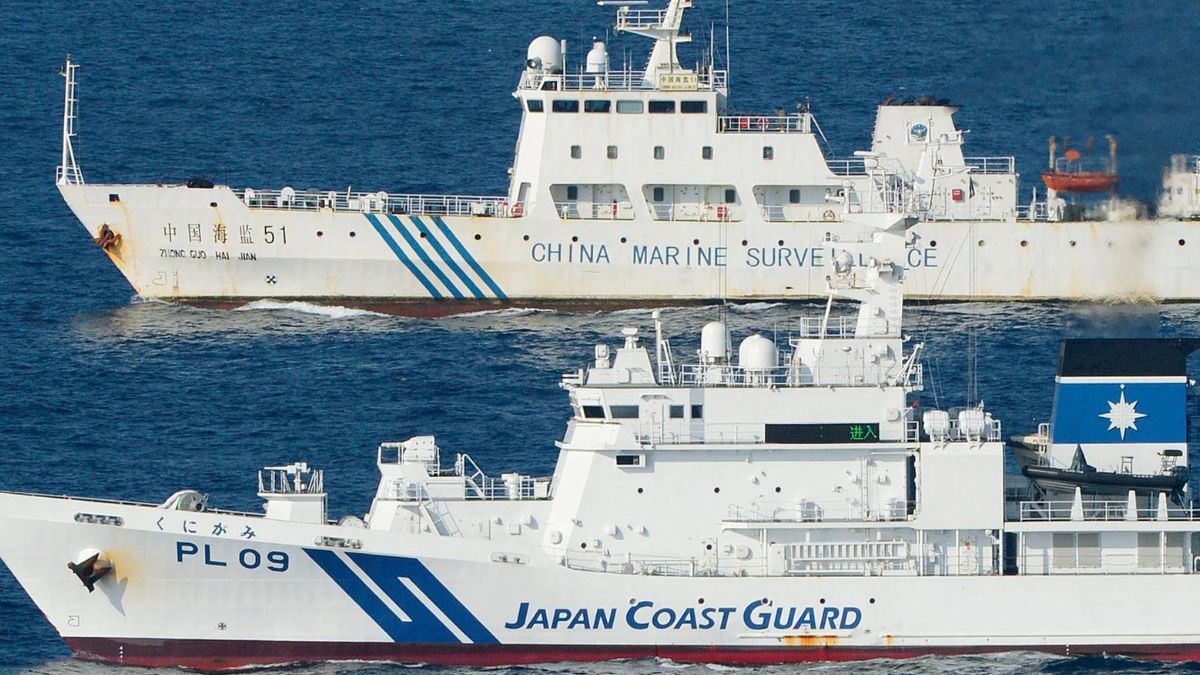 Image Credits - AP
Image Credits - AP
Japan finds itself on edge as it raises alarms over the increasing and persistent presence of Chinese vessels near the disputed Diaoyu Islands in the East China Sea. The Japanese defence ministry reported sightings of Chinese warships in the vicinity, raising concerns of a potential acceleration reminiscent of current maritime clashes between China and the Philippines in the South China Sea.
The Chinese vessels were observed near the boundaries of Japan’s Air Defense Identification Zone (ADIZ), a crucial area for Japan’s national security. The Japanese defence ministry, as reported by the Yomiuri newspaper on Wednesday, did not specify the time of the Chinese naval presence. In response to this perceived threat, Japan briskly deployed a comprehensive defence response, including an airborne early warning and control system aircraft, a patrol plane, a helicopter, and at least one marine destroyer to the area near Okinawa.
The Diaoyu Islands dispute has long been a source of tension between China and Japan. In the year 2013, China unilaterally declared an ADIZ in the East China Sea, enclosing an area that overlaps with Japan’s established ADIZ. This move escalated regional tensions, and the current naval activities near the Diaoyu Islands have reignited fears of a possible flare-up.
Analysts suggest that as China continues to assert its territorial claims over land, sea, and airspace in the East China Sea, Japan is preparing for confrontations similar to those witnessed by the Philippines in the South China Sea. Recent incidents in the South China Sea involved Chinese coastguard vessels using water cannons against Philippine supply vessels and harassing Filipino fishing boats.
The intensification of territorial disputes in the East China Sea adds another layer to the complex geopolitical landscape of the region. Japan’s robust response to the Chinese naval presence emphasizes the gravity of the situation, underscoring the potential for a regional conflict with broad-reaching implications.
According to the analysts, the ultimate goal of China is to weaken the international perception of Japanese sovereignty over the Diaoyu islands and eventually seize them. The Diaoyu Islands are called the Senkakus Islands by Japan. Since 1972, the north of Okinawa’s uninhabited archipelago has been controlled by Japan. A Jiangkai 2-class guided missile frigate was seen in waters near the islands in photos published in the Yomiuri newspaper on January 28. Tokyo is currently concerned regarding the possibility of accelerated regional tensions to such a point where water cannons or other weapons could be used, as per the analyst with the National Institute of Defense Studies (NIDS).
Masafumi Iida, a China expert at NIDS asserted, “Recently, Chinese coastguard vessels have been frequently chasing Japanese fishing boats in waters around the Senkakus. That is just one of the escalatory actions that China has been taking as it attempts to assume jurisdiction.” He further added by saying “Japan cannot accept that claim against its waters and this is a clear violation of Japanese territoriality over the Senkakus.”
Through various actions such as repeated coastguard intrusions into the waters, and drone flights Beijing has been intensifying its claims of sovereignty over the islands. Iida stated that the air and maritime presence of China in the area is growing larger and more frequent. On Monday, a Japanese coastguard vessel reported that a Chinese buoy had been discovered drifting inside the exclusive economic zone of Japan in the East China Sea. The 5-metered diameter buoy was bored with words that say ‘China ocean observation’, found 170 km north of the islands.
